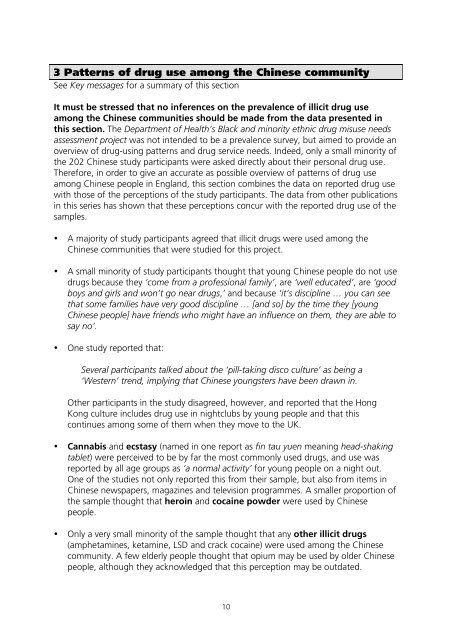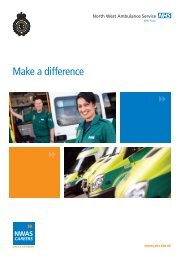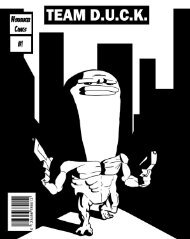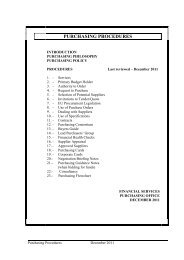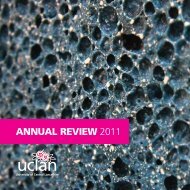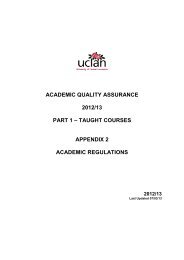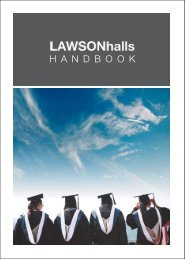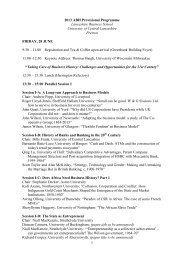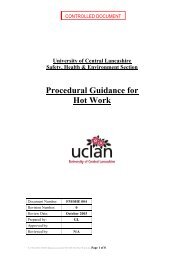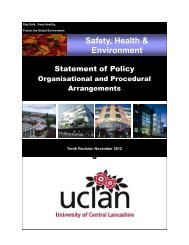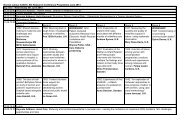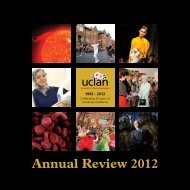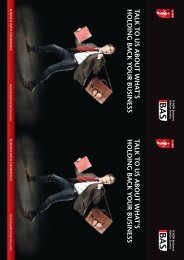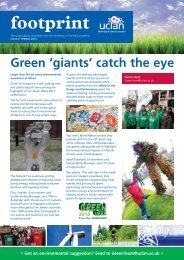5 Chinese Vietnamese Final - National Treatment Agency for ...
5 Chinese Vietnamese Final - National Treatment Agency for ...
5 Chinese Vietnamese Final - National Treatment Agency for ...
Create successful ePaper yourself
Turn your PDF publications into a flip-book with our unique Google optimized e-Paper software.
3 Patterns of drug use among the <strong>Chinese</strong> community<br />
See Key messages <strong>for</strong> a summary of this section<br />
It must be stressed that no inferences on the prevalence of illicit drug use<br />
among the <strong>Chinese</strong> communities should be made from the data presented in<br />
this section. The Department of Health’s Black and minority ethnic drug misuse needs<br />
assessment project was not intended to be a prevalence survey, but aimed to provide an<br />
overview of drug-using patterns and drug service needs. Indeed, only a small minority of<br />
the 202 <strong>Chinese</strong> study participants were asked directly about their personal drug use.<br />
There<strong>for</strong>e, in order to give an accurate as possible overview of patterns of drug use<br />
among <strong>Chinese</strong> people in England, this section combines the data on reported drug use<br />
with those of the perceptions of the study participants. The data from other publications<br />
in this series has shown that these perceptions concur with the reported drug use of the<br />
samples.<br />
• A majority of study participants agreed that illicit drugs were used among the<br />
<strong>Chinese</strong> communities that were studied <strong>for</strong> this project.<br />
• A small minority of study participants thought that young <strong>Chinese</strong> people do not use<br />
drugs because they ‘come from a professional family’, are ‘well educated’, are ‘good<br />
boys and girls and won’t go near drugs,’ and because ‘it’s discipline … you can see<br />
that some families have very good discipline … [and so] by the time they [young<br />
<strong>Chinese</strong> people] have friends who might have an influence on them, they are able to<br />
say no’.<br />
• One study reported that:<br />
Several participants talked about the ‘pill-taking disco culture’ as being a<br />
‘Western’ trend, implying that <strong>Chinese</strong> youngsters have been drawn in.<br />
Other participants in the study disagreed, however, and reported that the Hong<br />
Kong culture includes drug use in nightclubs by young people and that this<br />
continues among some of them when they move to the UK.<br />
• Cannabis and ecstasy (named in one report as fin tau yuen meaning head-shaking<br />
tablet) were perceived to be by far the most commonly used drugs, and use was<br />
reported by all age groups as ‘a normal activity’ <strong>for</strong> young people on a night out.<br />
One of the studies not only reported this from their sample, but also from items in<br />
<strong>Chinese</strong> newspapers, magazines and television programmes. A smaller proportion of<br />
the sample thought that heroin and cocaine powder were used by <strong>Chinese</strong><br />
people.<br />
• Only a very small minority of the sample thought that any other illicit drugs<br />
(amphetamines, ketamine, LSD and crack cocaine) were used among the <strong>Chinese</strong><br />
community. A few elderly people thought that opium may be used by older <strong>Chinese</strong><br />
people, although they acknowledged that this perception may be outdated.<br />
10


